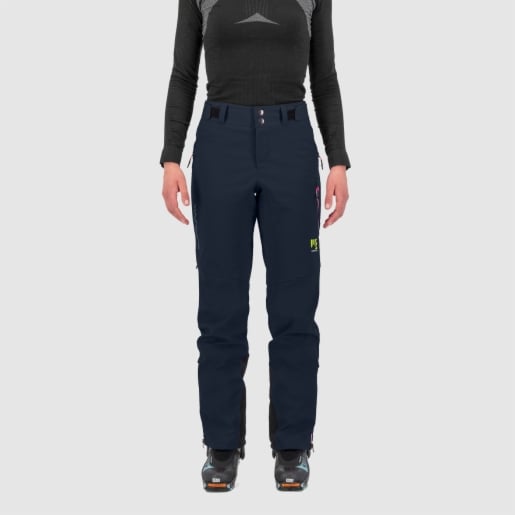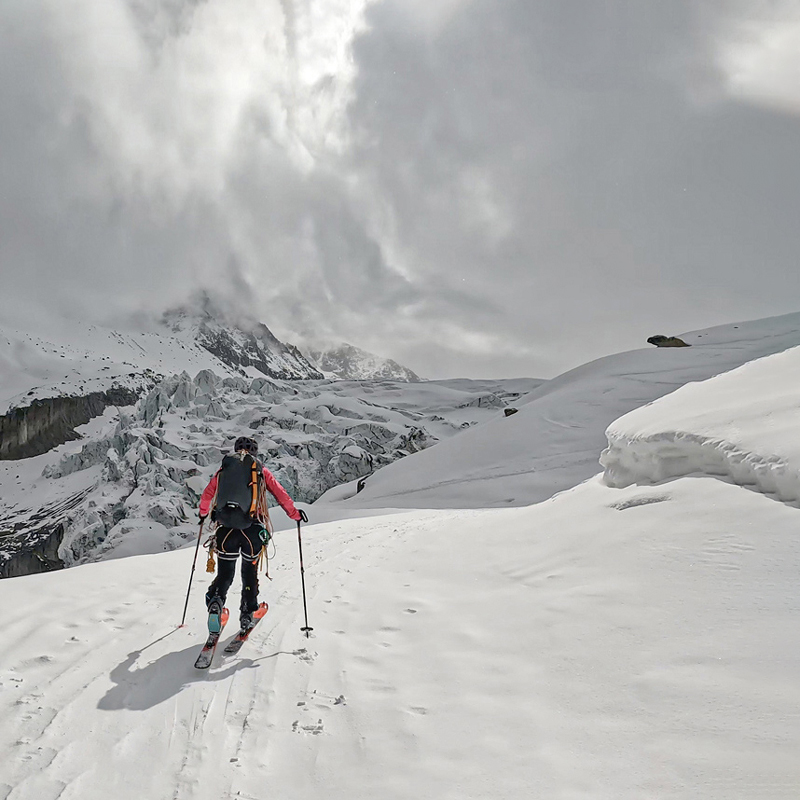
ADVENTURE ON THE HAUTE ROUTE
by Caroline Gredler
A 180-kilometer skiing adventure, following one of the great classic routes in the western Alps: the Haute Route Chamonix-Zermatt. An all-absorbing journey that grips you, taking you into amazing surroundings, offering unparalleled panoramas and the comfort of always having a safe destination to reach. I would say that the Haute Route is a visceral experience in which planning matters as much as instinct.
When Sophie Wirnsberger and I first conceived of our journey along the high route, we knew only the starting and ending point, nothing more. The initial information came from internet research on the stages, distances, elevation gain and loss, and characteristics of the terrain. But most of the sites or descriptions simply recommended hiring a mountain guide.
So I bought a book on the Haute Route, which would serve as the basis for planning our itinerary, together with videos found on the internet and advice from individuals who had ventured along this enticing route before us.
Having studied the route and completed our plans, we just have to wait for the right window, in terms of both weather and snow conditions. But that’s not all. Even with perfect snow and weather, we have to postpone several times due to some stomach problems that force me to take a break. We wanted to leave in mid-April, but that would be impossible under the current circumstances.
The days go by, as do the windows of good weather; we wait. As a result, a great sense of uncertainty begins to creep into me, although rest is helping me to regain my strength. I gradually start to feel better, but I think it’s probably too late to leave. It’s nearly April 20 and the mountain huts will close soon. On the Haute Route we wouldn’t meet anyone; we wouldn’t find any tracks. Is it too dangerous to consider tackling it with all these uncertainties? What should we do? The answer came from the heavens. A major weather front was on its way, followed by a few days of high pressure. That would be our last chance: three days of sunshine in late April. Otherwise, we’d have to postpone everything for a year.
When we reach Chamonix, on the eve of our departure, the sky is dark and it’s pouring rain. It would be impossible to head out on the adventure in these conditions; we can only hope for a slight improvement. According to the meteorological models, the storm should pass within a couple of days. If we start tomorrow, we’ll have to endure one changeable day in order to then enjoy clear skies and sunshine.
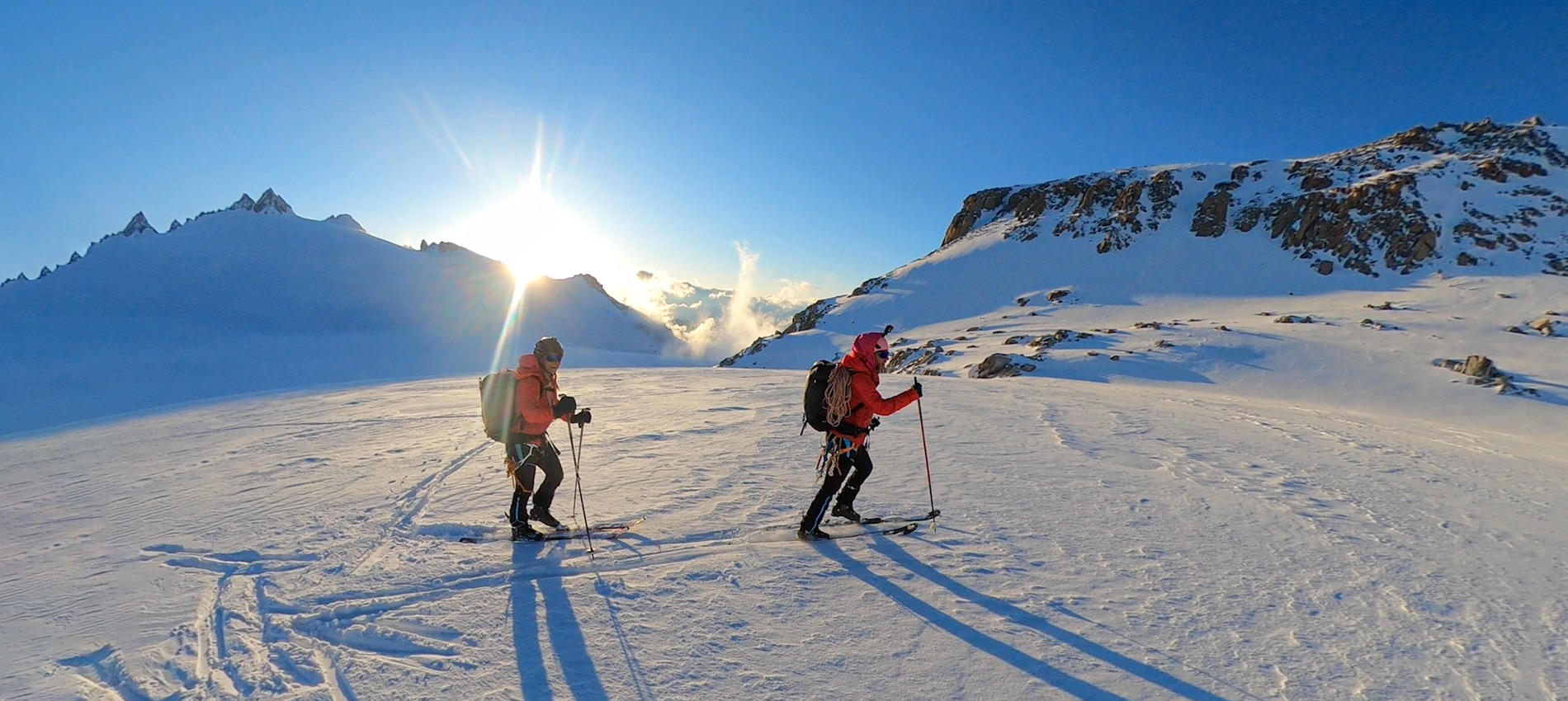
DAY 1
On the glacier we move slowly, enveloped in the whiteout. In the first few hours we meet some other ski mountaineers, then nothing more. No tracks. We get off course twice and, between fresh snow and treacherous covered crevasses, we lose a lot of time getting back on track — difficulties that will soon seem relative to us. Indeed, when we face the ascent of the Couloir du Chardonnet we understand the challenges we’re about to take on. The insufficient snow and steep rocks force us to improvise the ascent. We also know that once we cross the saddle, there’s no going back. Should we risk it anyway? To go or not to go. A difficult decision that scares us in some way. We know what we’re getting into, what can go wrong. Then we go.
Steep sections, with climbs on rocks, alternate with sections of rotten snow; moments of total whiteout blend into others where the sun lights our path.
Throughout the entire first day, the terrain offers no respite. Steep descents, often bad snow conditions. And another large crevasse, which strains our nerves. Beyond it, we have time to rest and think, to gaze out over the vast uncontaminated space of the glacier, with its steep slopes laden with fresh snow. The avalanche risk is definitely high.
"We have to get through the first day. Then it will get better.” We repeat it over and over, like a mantra, with every step. It’s now 7 p.m. — extremely late! We need to move quickly but carefully, paying attention to every potential danger. One step after another, without haste, despite having our hearts in our throats.
We finally reach the Cabane du Trient after nightfall, and the sky presents us with a magnificent panorama: a canopy of stars illuminates our last steps to the safety of the hut. I revel in an incredible feeling that makes up for all the day’s uncertainties.
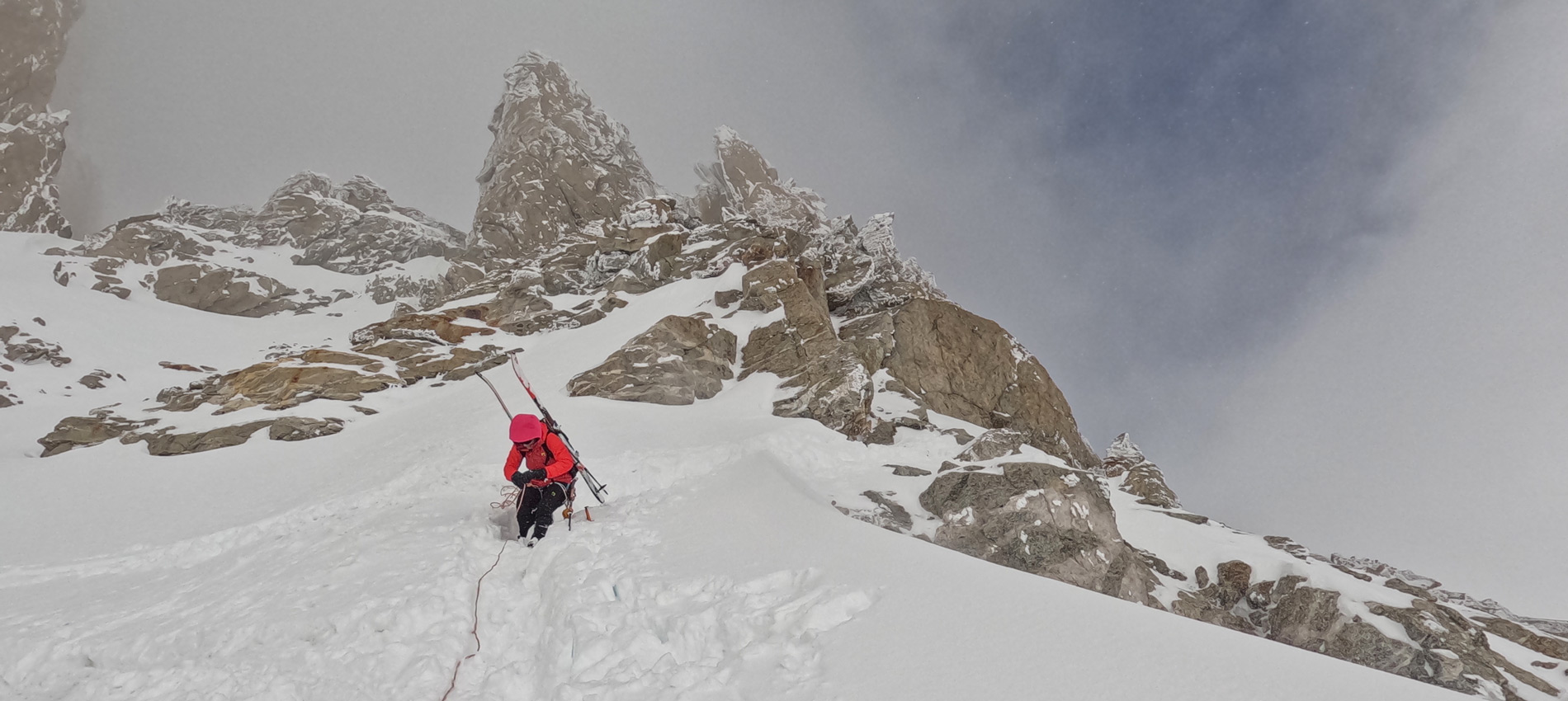
DAY 2
Waking up at 5:30 a.m., we prepare to experience this second day on the Haute Route. Outside the hut, the sky is clear and the temperature comfortable. Our goal for today is to reach the Cabane de Chanrion, after a night of celebration with the managers of the Cabane du Trient. It was their last day open, and they wanted to end the season with a round of drinks.
Still buzzed and groggy from the sleepless night, we set out again in simply perfect weather and very warm temperatures — heat that’s made suffocating by the great weight we’re carrying on our shoulders. At 3 p.m. we reach the Cabane de Valsorey, slower than expected. Once again, we have to make a critical choice: continue to Chanrion or stop. If we stop here for the night, we won’t be able to finish the traverse tomorrow, and we won’t have any other days available to complete our project.
Obviously, we decide to give it a try, lightening our backpacks by removing as much unneeded food as possible and picking up the pace. A series of steep descents awaits us, with snow made unstable by the afternoon heat. The words of the hut manager reassure us. In his opinion, if we move quickly we should be able to cover the rest of today’s stage before dark.
We set off with a bit of trepidation. The climbs are hard and long, the descents unquestionably steep. We try to take care with every step, to check every slope to avoid sudden detachments. It’s 8:30 p.m. when, physically and mentally exhausted, we finally enter the warmth of the hut. We smile as we take off our boots. It seems that we’ll really be able to reach Zermatt in three days.
DAY 3
The last day is magical. The glacier is all ours. There’s no one else around. No tracks. The sun, still high in the sky, accompanies us as we, unburdened, take on the climbs and descents. We’ve never been as fast as today. If I really had to find a flaw in this day, I’d say the snow conditions, which aren’t quite perfect. One more climb and one descent, and then we choose to skip the Tete Blanche. It’s too late; we need to make sure we reach Zermatt. We descend as far as the snow allows, then on foot with our skis on our backs. It’s a long, unending hike that takes us lower and lower, always under the gaze of the stern and elegant Matterhorn. Having reached safety, we now choose to take it easy, to spend time enjoying the incomparable panorama offered by this part of the Alps.
At 7 p.m. we’re in Zermatt, three days after starting this incredible adventure full of misadventures, critical moments, and effort — so much effort. But what an experience! And what panoramas!
What can I say? We experienced something all-absorbing. In good weather and with tracks to follow, the Haute Route would certainly not be such an immersive experience for an expert ski mountaineer. We found difficult conditions, which can make even the technically less-demanding portions of the route dangerous and challenging to contend with. But that’s the beauty of the mountains. Sophie and I chose to take a very specific risk, adapting our route to the situation when necessary. We’re proud of how we were able to deal with every unforeseen event, proving to ourselves that we can do something very demanding that we had previously thought impossible.
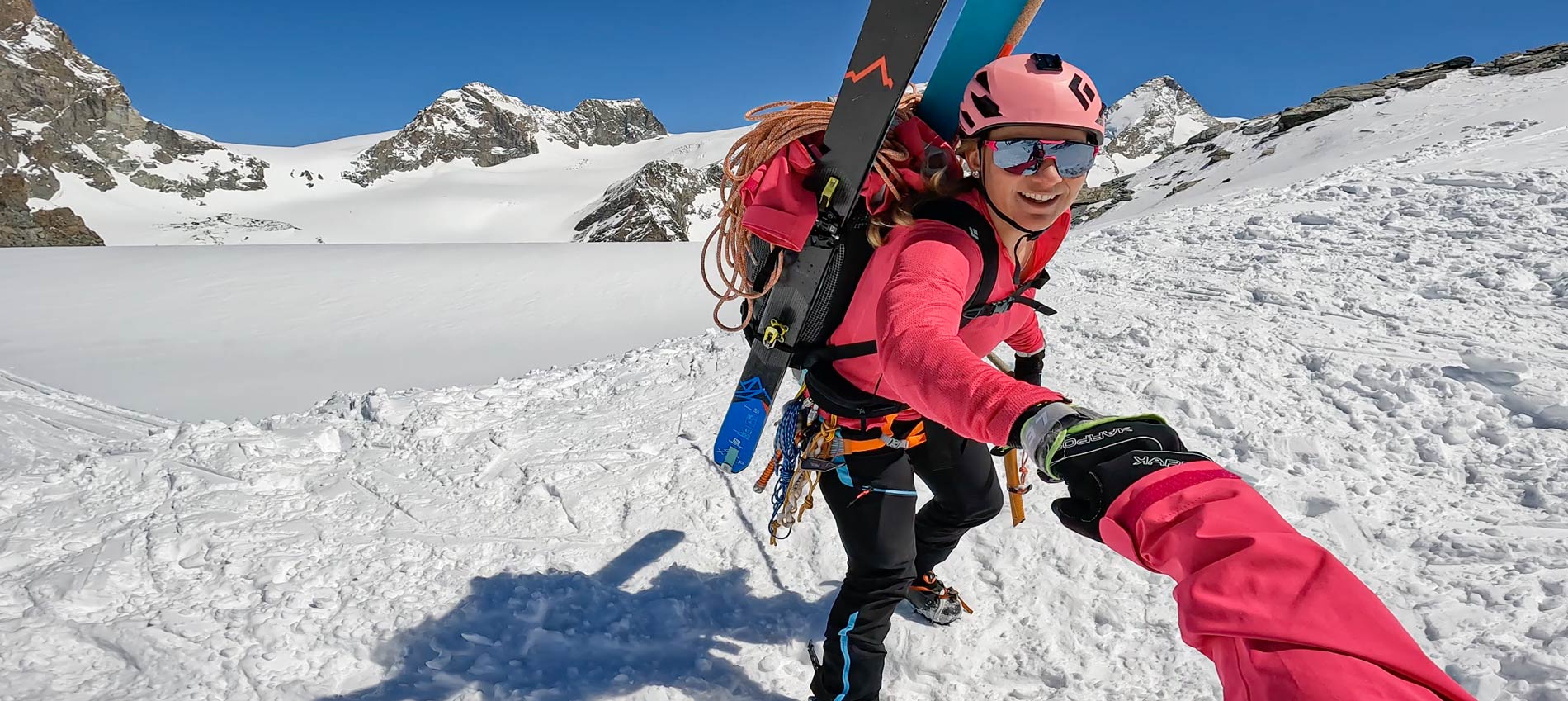
experience by



